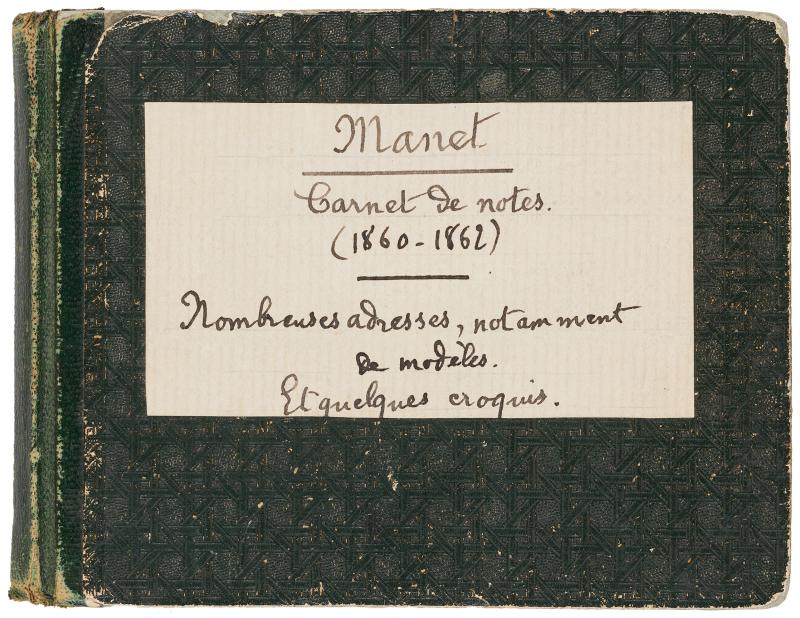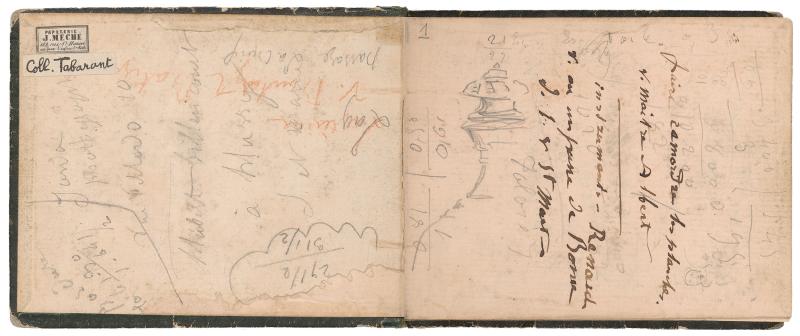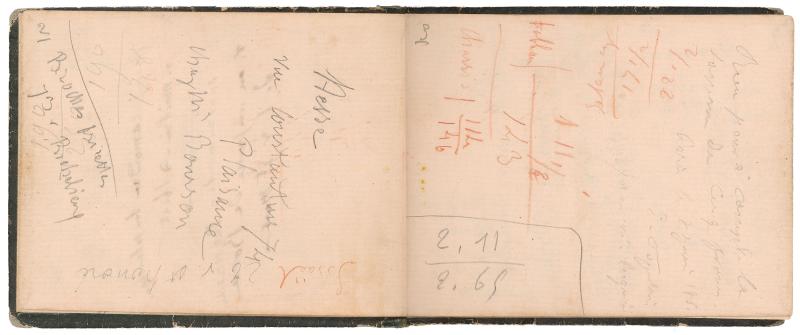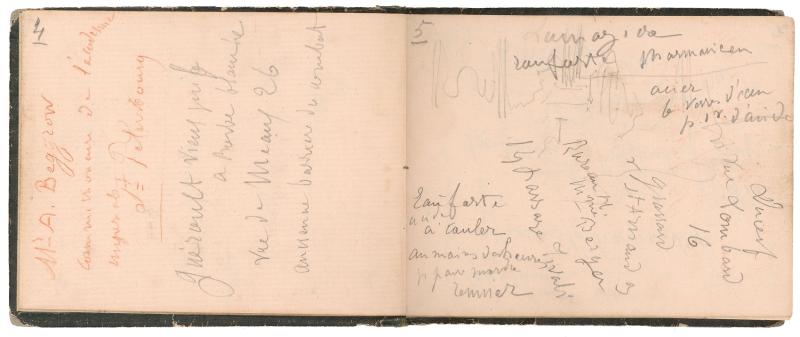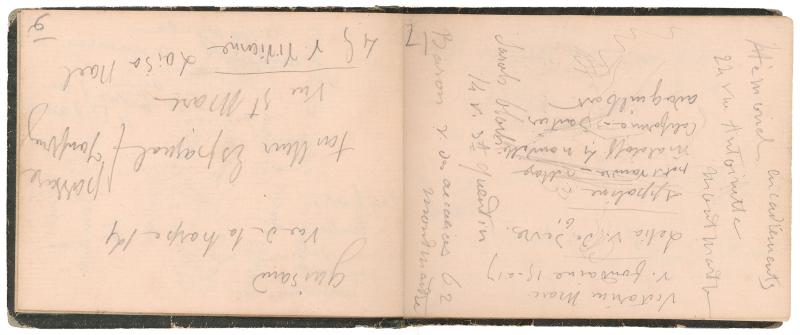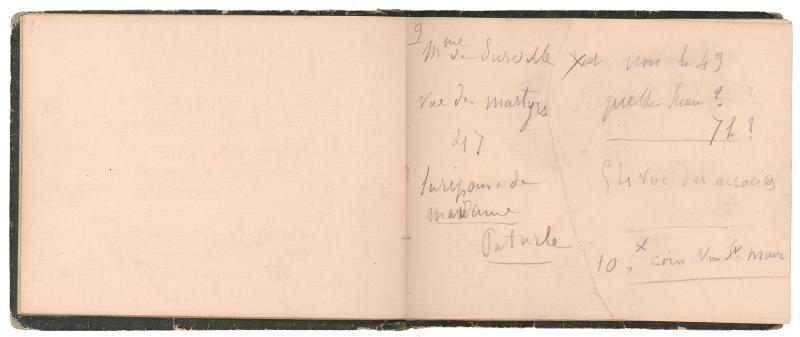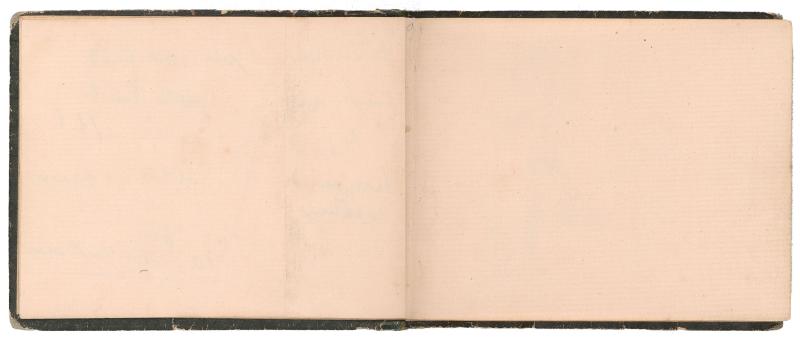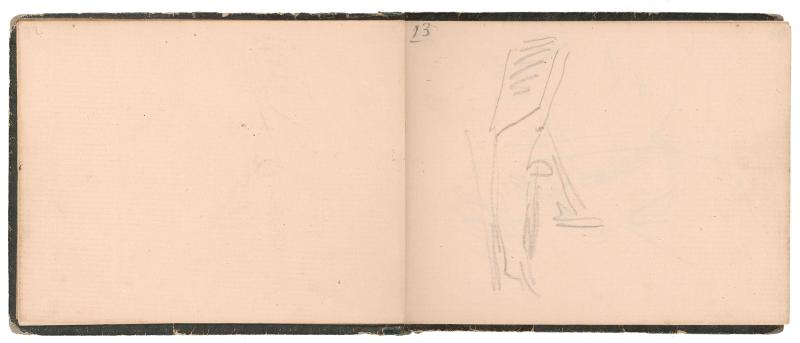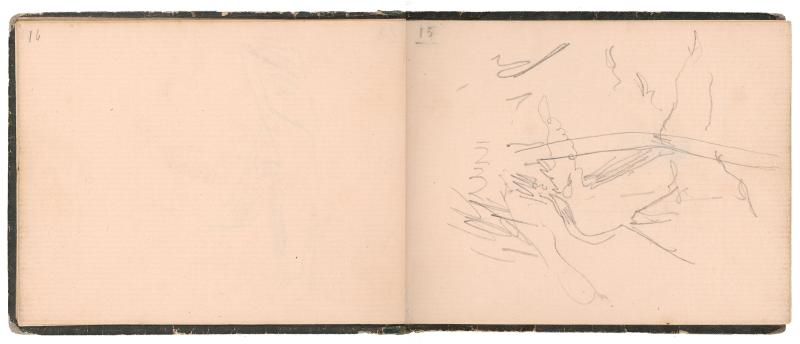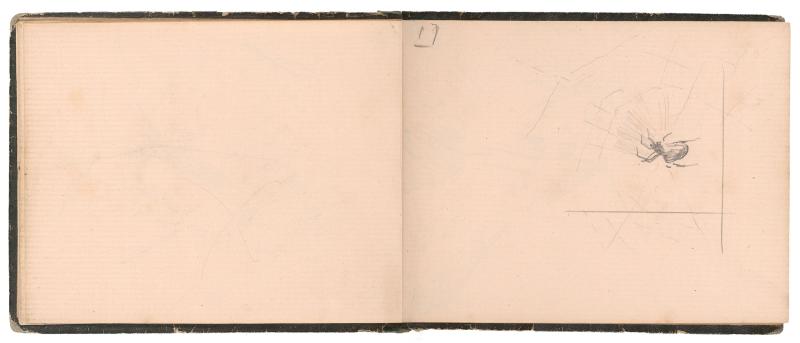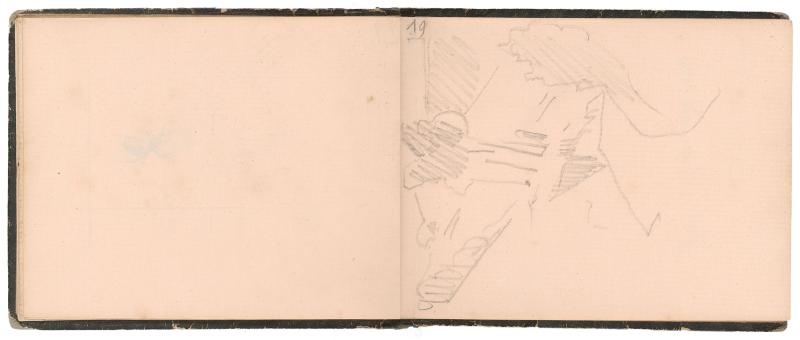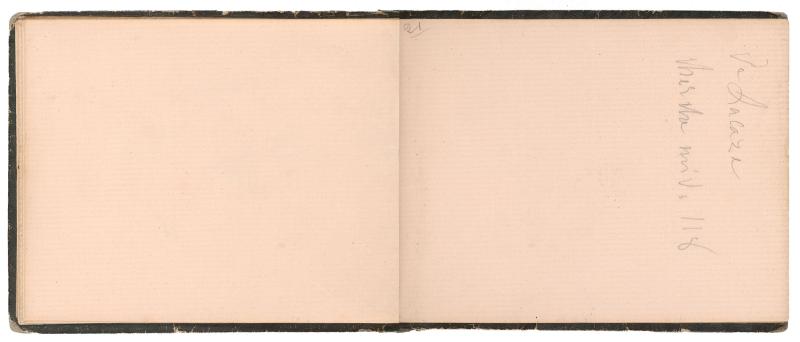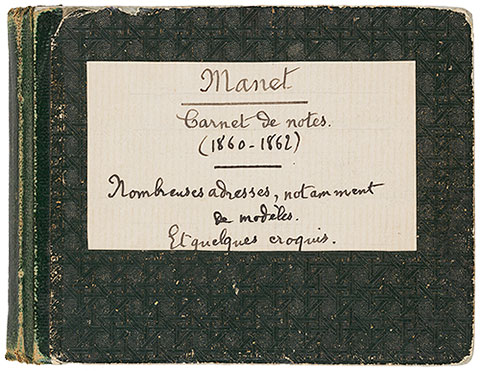
This is the only surviving personal notebook of the French artist Édouard Manet (1832–1883). He used it in the early 1860s, when he was between the ages of twenty-eight and thirty, documenting aspects of his everyday life and work in the two years leading up to his most significant contributions to modern painting, Le Déjeuner sur l’herbe and Olympia. He likely carried the notebook in his pocket and extracted it to record the names and addresses of models, publishers, framers, and collectors, jotting down accounts and sums owed to him, and making pencil sketches for works in progress, including Children in the Tuileries Gardens.
The notebook is small (10.9 x 14.1 cm), bound with a leather spine and embossed paper-covered boards, and heavily worn from frequent use. The inside front cover bears a label of the stationer J. Mèche, located at 189 rue Saint-Honoré, across from the Church of Saint-Roch, just steps from the Tuileries Gardens. Manet filled about 38 of the notebook’s 102 pages, leaving many blank. The volume once belonged to the author and critic Adolphe Tabarant (1863–1950), who made his own notes on some of the pages and inserted two sheets identifying Manet’s illustrations, in some instances incorrectly. Tabarant also added the label on the notebook’s front cover, identifying it as Manet / Carnet de notes. (1860–1862) / Nombreuses adresses, notamennent de modèles. Et quelques croquis. (Manet / Notebook. (1860–1862) / Many addresses, including models. And some sketches.)
The notebook includes the names, and occasionally the addresses, of several women who modeled for Manet during these years. Notably, it includes the earliest known reference to the white woman who posed as the courtesan in his celebrated work Olympia (1863)—Victorine Louise Meurant (called “Louise Meuran” in the notebook)—and the only known reference to Laure (her last name unknown), the Black model Manet depicted as a maid bearing a bouquet of flowers in the same painting.
Colin B. Bailey, Director, The Morgan Library & Museum, 2019
For Further Reading
Édouard Manet’s Notebook, 1860–1862, by Colin B. Bailey, Director, The Morgan Library & Museum
Cachin, Françoise, and Charles S. Moffett, eds. Manet: 1832-1883. New York: Metropolitan Museum of Art, 1983. Exhibition catalogue.
Lipton, Eunice. Alias Olympia: A Woman’s Search for Manet’s Notorious Model & Her Own Desire. Ithaca, NY: Cornell University Press, 1992.
Murrell, Denise. Posing Modernity: The Black Model from Manet and Matisse to Today. New Haven: Yale University Press, 2018. Exhibition catalog.
Ndiaye, Pap, and Louise Madinier, eds. Le modèle noir: De Géricault à Matisse. Paris: Musée d’Orsay, 2019. Exhibition catalogue.
Pollock, Griselda. Differencing the Canon: Feminist Desire and the Writing of Art’s Histories. London: Routledge, 1999.
Tabarant, Adolphe. Manet: Histoire catalographique. Paris: Montaigne, 1931.
Tabarant, Adolphe. Manet et ses oeuvres. Paris: Gallimard, 1947.

